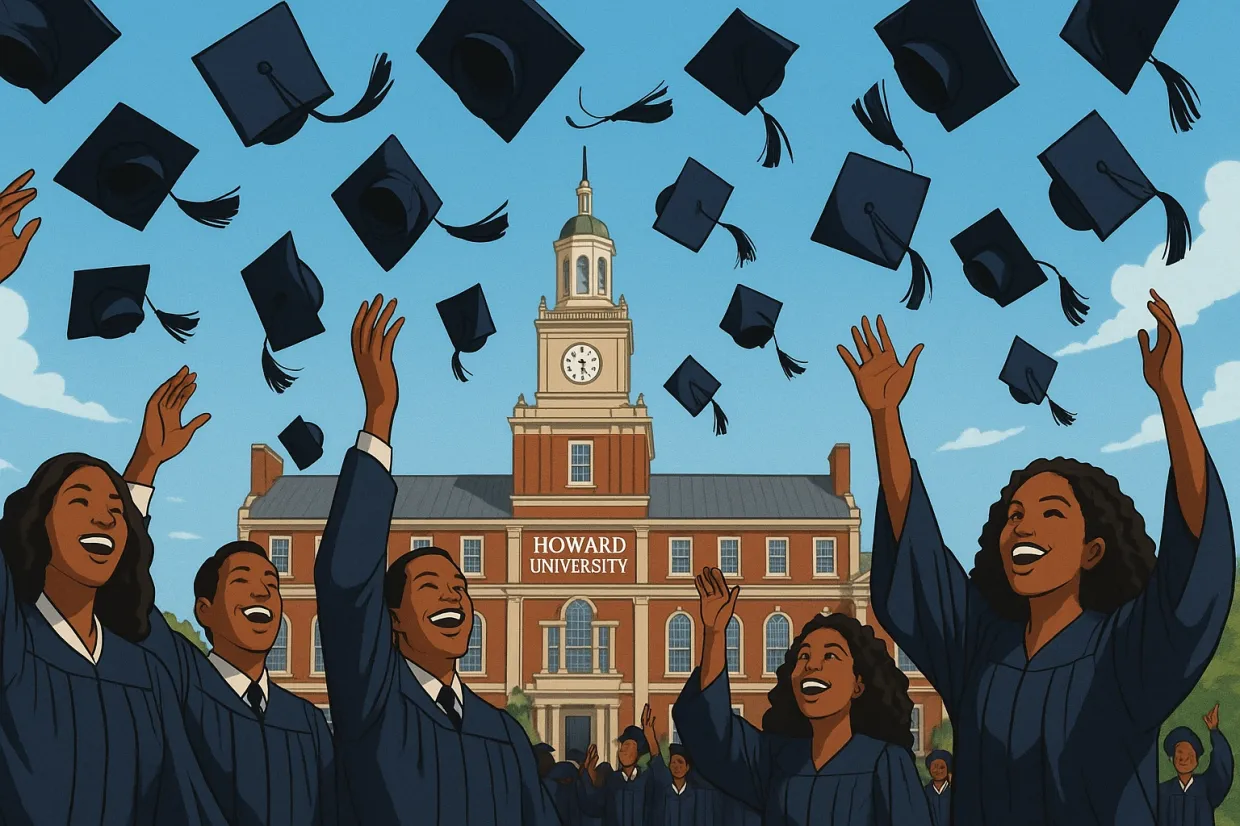Historically Black Colleges and Universities (HBCUs) have been pillars of educational opportunity for Black Americans for nearly 200 years. While HBCU institutions were originally established in response to segregation and racial exclusion, they continue to play a vital role in expanding access to higher education for historically underserved populations.
According to U.S. News & World Report, the average four-year graduation rate among the 78 ranked HBCUs reporting data was 23.2% for first-time, first-year students. Among the top 20 ranked HBCUs, that number rises significantly to an average of 40%, reflecting the growing emphasis on student retention and timely degree completion.
Key Highlights from U.S. News Data
- Spelman College in Georgia ranks No. 1 overall among HBCUs and leads the nation with a 68% four-year graduation rate, up 1% from the previous year.
- Howard University in Washington, D.C. holds the No. 2 spot, with a four-year graduation rate of 60%, down 1% year-over-year.
- Xavier University of Louisiana ranks third on the graduation list at 48%, followed by Fort Valley State University (44%) and Virginia Union University (41%).
- The national average enrollment across reporting HBCUs was 2,759 undergraduates, while the top 20 schools averaged 2,954.
Despite gains, challenges remain: eight HBCUs reported four-year graduation rates below 10%. Common barriers include changes in major, financial hardship, and personal obligations—all of which can delay or prevent degree completion.
Breakdown of Institution Types
Among the top 20 institutions with the highest four-year graduation rates:
- 5 are National Universities
- 7 are National Liberal Arts Colleges
- 8 are Regional Colleges or Universities
Only ranked institutions were included in this dataset. Unranked schools, which did not meet U.S. News & World Report‘s eligibility requirements, were not considered.
Top 20 HBCUs by Four-Year Graduation Rate
Source: U.S. News & World Report
| Rank | Institution Name | State | Overall HBCU Rank | Four-Year Graduation Rate |
|---|---|---|---|---|
| 1 | Spelman College | GA | 1 | 68% |
| 2 | Howard University | DC | 2 | 60% |
| 3 | Xavier University of Louisiana | LA | 6 | 48% |
| 4 | Fort Valley State University | GA | 35 | 44% |
| 5 | Virginia Union University | VA | 47 (tie) | 41% |
| 6 | Elizabeth City State University | NC | 14 | 40% |
| 7 | Fisk University | TN | 16 (tie) | 39% |
| 8 | Lincoln University | PA | 20 | 39% |
| 9 | Voorhees University | SC | 53 (tie) | 39% |
| 10 | Hampton University | VA | 7 | 38% |
| 11 | Claflin University | SC | 12 (tie) | 36% |
| 12 | Morehouse College | GA | 5 | 36% |
| 13 | Dillard University | LA | 16 (tie) | 35% |
| 14 | Clark Atlanta University | GA | 19 | 34% |
| 15 | North Carolina Agricultural and Technical State University | NC | 8 | 34% |
| 16 | Oakwood University | AL | 36 (tie) | 34% |
| 17 | Talladega College | AL | 55 (tie) | 33% |
| 18 | Winston-Salem State University | NC | 12 (tie) | 33% |
| 19 | Alcorn State University | MS | 31 | 31% |
| 20 | Bluefield State University | WV | 38 | 31% |
For prospective students and families, graduation rate is a key metric when evaluating college outcomes. The most recent data shows that HBCUs continue to foster strong academic environments where students can thrive, graduate, and enter the workforce with competitive credentials.
Source: U.S. News & World Report, HBCU Rankings and Graduation Rate Data

